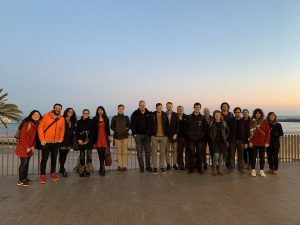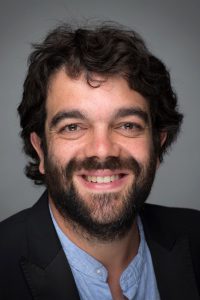When Dani Prieto-Alhambra discussed the Oxford Study-A-Thon at the 2019 U.S. Symposium, he introduced his talk as the “conversion of himself and 30-35 colleagues to the OMOP Common Data Model and to the OHDSI way of doing things.”
After sharing the incredible research that would eventually lead to a published study in The Lancet Rheumatology, he didn’t wait long to welcome new converts to the OHDSI community. Prieto-Alhambra coordinated the 2020 Barcelona Study-A-Thon on rheumatoid arthritis (RA); you can read the OHDSI release about the event here.
He recently discussed several aspects of the study-a-thon with OHDSI.org, and he also touched on the 2020 OHDSI European Symposium, which will be held March 27-29 at Oxford. Abstracts for the Symposium are due Friday, Feb. 14; more information on abstract submission and other areas of participation is available here.
Why did you choose rheumatoid arthritis as the focus for the 2020 EHDEN Study-a-thon?
RA is a chronic inflammatory arthritis that affects many people globally. Although many treatments exist to treat RA many patients do not tolerate them and others do not improve as much as we would like them to. There is a need for good quality data on how we are managing this disease, and on how patients do when they are treated in the real world of day-to-day busy clinics.
Much of the impact of the study-a-thon comes from who is in the room, so how did you go about choosing experts in various fields to take part in this week?
One of the most exciting components of Study-a-thons is the opportunity for close multidisciplinary collaboration. By sharing a whole week together we get to know and to learn from each other. I knew I needed people with expertise in protocol and scientific writing, literature review, data analyses, programming, epidemiology, and of course, specific knowledge of what RA is and how we treat it clinically.
 What were the positives from the Oxford Study-a-thon that you wanted to keep for Barcelona, and what lessons did you learn from that first experience that led to improvements in Barcelona?
What were the positives from the Oxford Study-a-thon that you wanted to keep for Barcelona, and what lessons did you learn from that first experience that led to improvements in Barcelona?
90% of the Oxford experience was extremely positive, but there were some things we really wanted to improve. I think this second EHDEN-OHDSI study-a-thon has been better planned in advance. We had a basic protocol and obtained approval from European data custodians like Sidiap who would not otherwise be allowed to engage.
I won’t say them now, but I think I have also learned things in this second Studyathon that we should improve for the next one too.
While the results haven’t been disseminated yet, what either surprised or impressed you most about the week?
I am always impressed by “simple” descriptive data. Seeing how RA is managed differently in 14 countries from four continents was just amazing, and we had these results already by Tuesday!
Then, I was extremely proud when I realized by the end of the week that we had just completed the largest study ever done on RA.
You have experienced two of these study-a-thons and clearly experienced great successes in both. In your mind, what makes the study-a-thon such an effective method for research in an open-science community?
I think there are three key ingredients:
1. OMOP and the OHDSI tools: by using previously mapped data and the OHDSI tools we are in fact leveraging from years of work by a large and generous community of scientists;
2. PEOPLE and COMMUNITY: asking bright and hardworking people to let go of everything else to just focus on one task is not easy. But if you get them to connect and engage as a group amazing things can happen;
3. A GOOD RESEARCH QUESTION: once you have the two above, give those people a clinically and scientifically relevant question and they will not go to sleep until they answer it.
What are the next steps, and what can you tell people about EULAR, your target conference to disseminate these results?
We have submitted a few abstracts to EULAR (European League Against Rheumatism), one of the largest Rheumatology events globally. I expect that our results will have great coverage there and that many rheumatologists from all over the world will learn from our research and take them into account. Now we are preparing some more abstracts for ISPE (International Society for Pharmaceutical Engineering), a more methodological conference where we can learn some of the more ‘mathsy’ learnings from our study. Finally, we are working on three manuscripts that will hopefully be submitted in the coming few weeks. My final goal is to see our studies influencing clinical guidelines and improving patient care all around the world
Many members of the OHDSI community will be seeing you in late March, when you lead the European Symposium. You have already hinted at new tutorials, but what can community members expect at Oxford for the 2020 EU Symposium?
Oxford is a beautiful city that has always hosted and generated top-quality science. I hope our guests at the OHDSI Europe symposium will be inspired by the surroundings as much as I am sure they will be excited by the contents of our symposium. I can’t wait to welcome you all to Oxford!

